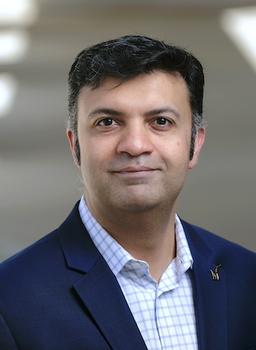The U.S. Army relies on numerous ground vehicles for successful operations, requiring vehicles that can navigate a variety of terrains and allow soldiers to be effective and safe. This creates a challenging set of requirements for new vehicle design, engineering, and operations that must be cost-effective.

George Mason University is now an important contributor for researching novel approaches and development of new vehicles, thanks to a $1.6 million grant from the National Center for Manufacturing Sciences under Digital Enterprise Technology for Maintenance and Sustainment Improvements—Phase II effort, sponsored through the Army’s Ground Vehicle Systems Center.
The George Mason project, called DELTA-FORCE (Digital Environments for Life-Cycle Test and Evaluation For Off-Road Combat VEhicles), is a joint effort between the College of Engineering and Computing’s (CEC) Center for Excellence in Command, Control, Communications, Computing, Cyber, and Intelligence and the College of Science’s Center for Collision Safety and Analysis. Ali Raz of the Systems Engineering and Operations Research (SEOR) Department is the principal investigator (PI) and Steve Kan, a professor in Mason Science, is the co-PI.
This project aims to develop a comprehensive digital engineering methodology for new vehicle concepts. “It's a very unique opportunity for George Mason in that we're going to be building a complete digital environment for life cycle testing and analysis," Raz said. "Life cycle elements have their own domain-specific models, and analysis tools that are not linked. We are building a digital environment to connect them.”

The different phases of the vehicle life cycle, from conceptual design, preliminary design, detailed design, manufacturing, and maintenance, each have their own models and analysis tools that do not “talk” to one another. A key aspect of this project is creating an ontology and model-based systems engineering (MBSE) foundation that will connect the different domain-models, providing a common language for integrating the models and building interfaces in a digital environment.
“In order to produce new advanced complex systems, we need to transition into digital environments; the Department of Defense has been laying the groundwork for that for five years or so,” said Raz. “So essentially we will build a digital twin for modeling the off-road vehicle and environments, that is connected to a physical twin via reverse engineering.”
Kan said that “This project will enable us to work in the digital engineering field in a holistic way by integrating different system-level requirements, design, and performance, to the physics level of materials and geometry using reverse engineering technologies. In this project, we build upon our expertise in automotive and aerospace safety engineering and collaborate with colleagues in both CEC and Mason Science at George Mason to develop this digital engineering platform.”
Raz added that DELTA-FORCE will provide an opportunity through new undergraduate courses for George Mason students to get hands-on experience in building digital twins and conducting analysis.
Although this effort is sponsored by the Department of Defense, its content does not necessarily reflect the position or policy of the government; no official endorsement should be inferred..
In This Story
Related News
- May 29, 2025
- May 23, 2025
- May 12, 2025
- January 29, 2025
- January 13, 2025
